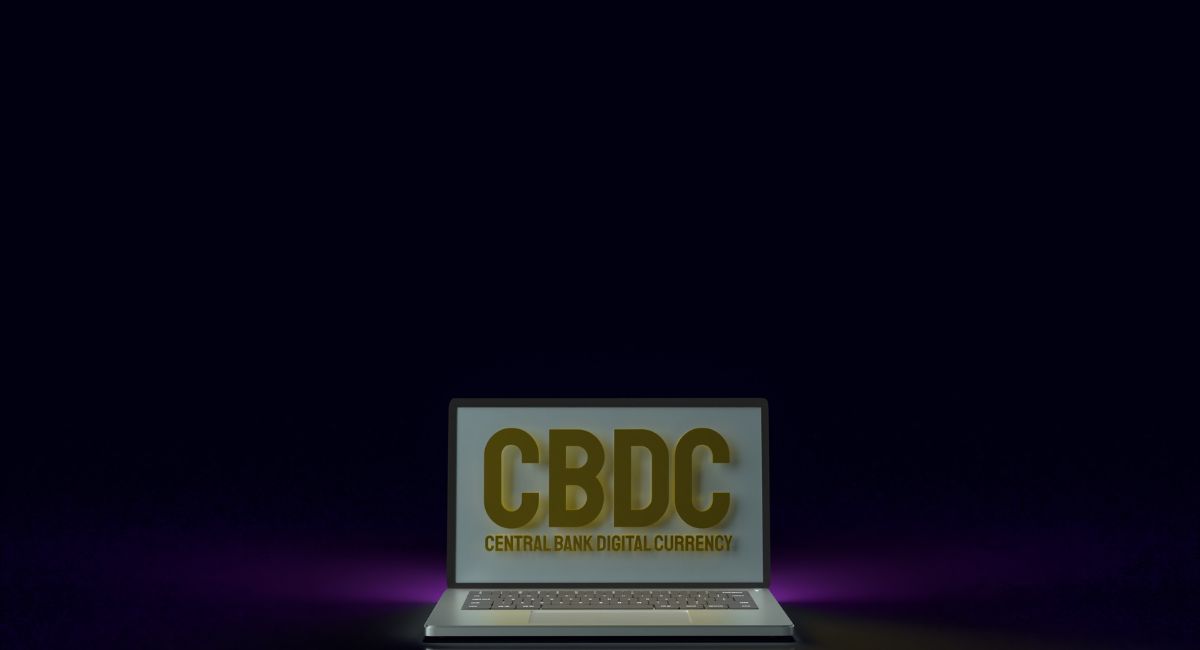Global CBDC Push: How Pilot Programs in the EU and Japan Are Reshaping The Boring Traditional Finance In 2024
Central Bank Digital Currencies (CBDCs) are rapidly becoming a focal point of the global financial landscape, marking a new chapter in the evolution of money. Governments and central banks worldwide, including those in the European Union and Japan, have launched pilot programs to explore the potential of CBDCs. These initiatives aim to modernize financial systems, improve efficiency, and compete with decentralized cryptocurrencies like Bitcoin and stablecoins.
CBDCs represent digital versions of fiat currencies issued and regulated by a nation’s central bank. Unlike decentralized cryptocurrencies, they are centralized and operate under government authority. The rise of CBDCs reflects a broader shift in the financial ecosystem, with many countries recognizing the need to keep pace with changing consumer habits, technological advancements, and the growing competition from private cryptocurrencies.
In this article, we will explore the global push towards CBDCs, focusing on pilot programs in the European Union (EU) and Japan. We’ll discuss how these initiatives are influencing traditional finance, what advantages they offer, and the challenges they present. Finally, we’ll examine the broader global context and what the future holds for CBDCs as they become a transformative force in the world of money.
Understanding Central Bank Digital Currencies (CBDCs)
CBDCs are digital forms of a country’s official currency that are backed by the central bank. Unlike decentralized cryptocurrencies, such as Bitcoin or Ethereum, CBDCs are fully centralized, with the central bank acting as the sole issuer and regulator of the currency. CBDCs aim to serve as legal tender and function alongside cash, enabling seamless digital transactions. They are designed to be secure, efficient, and scalable, providing a new means for governments to maintain control over the monetary system while addressing the evolving needs of a digital economy.
CBDCs can be classified into two broad categories:
- Wholesale CBDCs: These are primarily used by financial institutions for interbank transactions, enhancing the efficiency and security of large-scale transfers.
- Retail CBDCs: These are designed for use by the general public, offering a digital alternative to physical cash for everyday transactions.
As countries explore the potential of CBDCs, the shift could dramatically alter how people access and use money, impacting the entire financial system from consumers to businesses to banks.
Also, read – CBDCs :Top 6 Intriguing Privacy and Security Implications of Central Bank Digital Currencies
Why Are Countries Pushing for CBDCs?
The increasing interest in CBDCs is driven by several factors, including technological advancements, the rise of private cryptocurrencies, and the need for greater financial inclusion. Here are some of the primary reasons why countries are launching CBDC programs:
- Maintaining Sovereignty Over Money: The proliferation of private cryptocurrencies, like Bitcoin, and stablecoins, such as Facebook’s Diem (formerly Libra), has posed a challenge to traditional fiat currencies. Central banks are keen to maintain control over their monetary systems by offering a digital currency that competes with these decentralized options.
- Modernizing Payments Systems: CBDCs offer the potential to modernize outdated payment systems, making transactions faster, cheaper, and more efficient. This is particularly important in cross-border transactions, which are often slow and costly under current systems.
- Financial Inclusion: CBDCs have the potential to provide banking services to unbanked populations by offering a digital currency that is accessible via mobile devices. This is especially relevant in developing nations where traditional banking infrastructure is limited.
- Improving Monetary Policy Tools: Central banks could have more direct control over the money supply with CBDCs, enabling them to implement monetary policies more effectively. For instance, CBDCs could allow for more precise tracking of economic activity and enable more targeted stimulus measures.
The European Union’s Digital Euro Pilot
The European Central Bank (ECB) has been at the forefront of the CBDC movement in Europe. In July 2021, the ECB launched its investigation phase for a digital euro, signaling its commitment to exploring the feasibility of a European CBDC. This phase, expected to last until 2023, focuses on understanding the technical, legal, and policy challenges associated with the digital euro.
1. Goals of the Digital Euro
The ECB has outlined several key objectives for the digital euro, including:
- Ensuring Financial Stability: By introducing a CBDC, the ECB aims to safeguard the stability of the eurozone’s financial system in an increasingly digital world. The digital euro would act as a complement to cash, providing an additional means of payment without replacing traditional forms of money.
- Providing a Public Digital Payment Option: The rise of private digital payment systems, such as PayPal and Revolut, has led to concerns about the dominance of non-EU providers in the European payments landscape. The digital euro would offer a public alternative, ensuring that Europeans have access to a secure, efficient, and EU-controlled digital payment option.
- Enhancing Cross-Border Payments: One of the primary challenges of the current financial system is the complexity and cost of cross-border transactions. The digital euro could streamline this process, making cross-border payments within the eurozone faster and more affordable.
2. Pilot Program Developments
In 2022, the ECB launched several pilot programs to test the digital euro in different use cases. These pilots involve both retail and wholesale scenarios, allowing the ECB to assess the technical feasibility and usability of the digital euro across various sectors.
- Retail Pilots: These focus on how individuals and businesses can use the digital euro for everyday transactions. The ECB is working with commercial banks and fintech companies to integrate the digital euro into existing payment systems, testing how it interacts with mobile banking apps, point-of-sale systems, and online platforms.
- Wholesale Pilots: Wholesale pilots are testing the use of the digital euro in interbank transactions and cross-border payments. These pilots aim to improve the efficiency and security of large-scale transfers between financial institutions, reducing settlement times and costs.
The ECB has made it clear that the digital euro will be designed with privacy and security in mind, ensuring that users’ financial data is protected. However, they also acknowledge the need for regulatory oversight to prevent illicit activities, such as money laundering and tax evasion.
Japan’s CBDC Experiment: The Digital Yen
Japan, one of the world’s leading economies, has also joined the global CBDC push. The Bank of Japan (BoJ) began its exploration of a digital yen in 2021, launching the first phase of its CBDC pilot program. The initiative aims to test the technical feasibility of a digital yen and understand its potential impact on the country’s financial system.
1. Motivations for the Digital Yen
Japan’s move towards a CBDC is driven by several factors:
- Declining Use of Cash: Japan has traditionally been a cash-heavy society, but recent trends show a shift towards digital payments, particularly after the COVID-19 pandemic. The BoJ sees the digital yen as a way to modernize the payment system and reduce the reliance on physical cash.
- Competition with Cryptocurrencies: The rise of private cryptocurrencies, particularly in Asia, has prompted the Japanese government to explore a digital currency that is backed by the central bank. This would provide a secure and stable alternative to decentralized cryptocurrencies, which are often seen as volatile and risky.
- Enhancing Financial Innovation: Japan is keen to maintain its status as a leader in financial innovation. The introduction of a digital yen could spur innovation in the fintech sector, leading to new business models and opportunities for growth.
2. Pilot Program Structure
The BoJ’s CBDC pilot is being conducted in multiple phases, each focusing on different aspects of the digital yen’s functionality.
- Phase 1: The first phase, launched in April 2021, focused on testing the basic functions of the digital yen, such as issuance, distribution, and redemption. The BoJ assessed the technical feasibility of creating a CBDC that could operate on a large scale, ensuring that it could handle the high transaction volumes required in a modern economy.
- Phase 2: The second phase, which began in 2022, focused on more complex issues, such as privacy, security, and interoperability with existing payment systems. This phase also involved collaboration with commercial banks and fintech companies to test how the digital yen could be integrated into Japan’s financial infrastructure.
- Phase 3: The BoJ has announced plans for a third phase, which will involve public participation in the pilot program. This phase aims to gather feedback from consumers and businesses on their experience using the digital yen in real-world scenarios, helping to shape the final design of the CBDC.
Japan’s cautious and methodical approach to the digital yen reflects its desire to ensure that any potential CBDC is thoroughly tested and understood before being rolled out on a larger scale.
The Global Context: Other Countries Joining the CBDC Push
While the EU and Japan are leading the way with their pilot programs, they are by no means alone in the global CBDC race. Several other countries have made significant strides in their exploration of digital currencies, each with its own goals and motivations.
1. China’s Digital Yuan
China has emerged as a global leader in CBDC development with the rollout of its digital yuan, also known as the e-CNY. The People’s Bank of China (PBoC) began testing the digital yuan in 2020, and since then, the program has expanded to multiple cities and regions.
The digital yuan is designed to complement the country’s cashless payment ecosystem, which is already dominated by mobile payment platforms like Alipay and WeChat Pay. The Chinese government sees the digital yuan as a way to enhance the efficiency of its payment system, reduce reliance on private payment providers, and increase oversight over financial transactions.
2. The United States’ CBDC Research
The U.S. Federal Reserve is also exploring the possibility of a CBDC, although it has not yet launched a pilot program. The Fed’s research focuses on understanding the potential benefits and risks of a digital dollar, particularly in the context of maintaining the U.S. dollar’s status as the world’s reserve currency.
The U.S. is approaching CBDCs with caution, recognizing that any move towards a digital dollar would have significant implications for the global financial system. However, the growing interest in CBDCs worldwide has prompted the Fed to take the issue more seriously, with several research papers and consultations underway.
Challenges and Considerations
While the global push towards CBDCs presents numerous opportunities, there are also significant challenges that need to be addressed before widespread adoption can occur.
- Privacy Concerns: One of the most significant concerns surrounding CBDCs is the issue of privacy. Unlike cash transactions, which are anonymous, CBDCs could allow governments to track every digital transaction made by individuals. This has raised concerns about surveillance and the potential for abuse of power.
- Cybersecurity Risks: As CBDCs operate in the digital realm, they are vulnerable to cybersecurity threats, such as hacking and fraud. Ensuring the security of CBDC systems will be critical to maintaining public trust in the currency.
- Financial Stability: The introduction of CBDCs could have unintended consequences for the traditional banking system. If people choose to hold their money in CBDCs rather than in bank accounts, it could lead to a reduction in bank deposits, which could, in turn, affect banks’ ability to lend.
- Regulatory Frameworks: Governments will need to develop comprehensive regulatory frameworks to oversee the issuance and use of CBDCs. This includes ensuring that CBDCs comply with anti-money laundering (AML) and know-your-customer (KYC) regulations while balancing innovation with consumer protection.
Also, read – Top 10 Intriguing Ways Tokenized Commodities Will Be Affected By CBDC In 2024
Conclusion: The Future of CBDCs
The global push towards CBDCs marks a significant moment in the evolution of money and the financial system. With pilot programs underway in the European Union, Japan, and other major economies, CBDCs are poised to reshape how we think about currency, payments, and the role of central banks in the digital age.
While challenges remain, the benefits of CBDCs—ranging from enhanced financial inclusion to more efficient cross-border payments—are too great to ignore. As countries continue to explore and refine their CBDC models, we can expect to see further innovations that will change the dynamics of traditional finance and usher in a new era of digital currency.
The journey toward CBDCs is just beginning, but its potential to transform global finance is immense. As more pilot programs are launched and more countries join the race, CBDCs could become a central pillar of the financial system in the years to come, offering a glimpse into the future of money in a rapidly digitizing world.
Stay informed with daily updates from Blockchain Magazine on Google News. Click here to follow us and mark as favorite: [Blockchain Magazine on Google News].
Get Blockchain Insights In Inbox
Stay ahead of the curve with expert analysis and market updates.
latest from tech
Disclaimer: Any post shared by a third-party agency are sponsored and Blockchain Magazine has no views on any such posts. The views and opinions expressed in this post are those of the clients and do not necessarily reflect the official policy or position of Blockchain Magazine. The information provided in this post is for informational purposes only and should not be considered as financial, investment, or professional advice. Blockchain Magazine does not endorse or promote any specific products, services, or companies mentioned in this posts. Readers are encouraged to conduct their own research and consult with a qualified professional before making any financial decisions. The featured image used is just a creative depiction of the title and it does not intend to hurt sentiments of any person or institution. If it hurts anyone sentiments, please do not hesitate to reach out to Blockchain Magazine.

 Bitcoin
Bitcoin  Ethereum
Ethereum  XRP
XRP  Tether
Tether  Solana
Solana  USDC
USDC  Dogecoin
Dogecoin  Cardano
Cardano  Lido Staked Ether
Lido Staked Ether  TRON
TRON  Chainlink
Chainlink  Avalanche
Avalanche  Wrapped stETH
Wrapped stETH  Wrapped Bitcoin
Wrapped Bitcoin  Stellar
Stellar  Sui
Sui  Toncoin
Toncoin  Hedera
Hedera  Shiba Inu
Shiba Inu  Polkadot
Polkadot  Litecoin
Litecoin  WETH
WETH  LEO Token
LEO Token  Hyperliquid
Hyperliquid  Bitcoin Cash
Bitcoin Cash  Bitget Token
Bitget Token  Uniswap
Uniswap  Wrapped eETH
Wrapped eETH  USDS
USDS  Ethena USDe
Ethena USDe  Pepe
Pepe  NEAR Protocol
NEAR Protocol  MANTRA
MANTRA  Aave
Aave  Official Trump
Official Trump  Ondo
Ondo  Internet Computer
Internet Computer  Monero
Monero  Aptos
Aptos  Mantle
Mantle  Ethereum Classic
Ethereum Classic  WhiteBIT Coin
WhiteBIT Coin  Bittensor
Bittensor  Cronos
Cronos  POL (ex-MATIC)
POL (ex-MATIC)  Dai
Dai  OKB
OKB 




